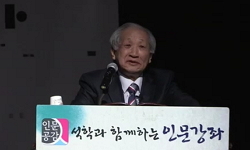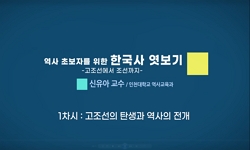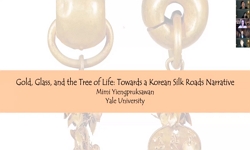본 논문은 신라 佛塔에 浮彫된 금강역사상의 彫像的 의의를 불탑의 형식과 구조적 관계 속에서 고찰해 보았다. 현존하는 불탑 부조상 중에서 금강역사상은 가장 이른 시기에 제작된 도상이...
http://chineseinput.net/에서 pinyin(병음)방식으로 중국어를 변환할 수 있습니다.
변환된 중국어를 복사하여 사용하시면 됩니다.
- 中文 을 입력하시려면 zhongwen을 입력하시고 space를누르시면됩니다.
- 北京 을 입력하시려면 beijing을 입력하시고 space를 누르시면 됩니다.

신라 불탑(佛塔)의 형식과 금강역사 부조상(浮彫像) 연구 = A Study on the form of Sila Buddhist Pagodas and the pagoda reliefs of Vajrapani
한글로보기https://www.riss.kr/link?id=A99941980
- 저자
- 발행기관
- 학술지명
- 권호사항
-
발행연도
2014
-
작성언어
Korean
-
주제어
금강역사상 ; 부조상 ; 분황사 ; 선덕여왕 ; 불탑 ; 전탑 ; 석탑 ; 스투파 ; 신라 ; 통일신라 ; the Images of Vajrapani ; pagoda reliefs ; Bunhwangsa ; Queen Seondeok ; Buddhist pagoda ; brick pagoda ; stone pagoda ; stupa ; Sila ; United Sila ; 浮彫像 ; 佛塔 ; 塼塔
-
등재정보
KCI등재후보
-
자료형태
학술저널
-
수록면
33-72(40쪽)
- DOI식별코드
- 제공처
-
0
상세조회 -
0
다운로드
부가정보
국문 초록 (Abstract)
본 논문은 신라 佛塔에 浮彫된 금강역사상의 彫像的 의의를 불탑의 형식과 구조적 관계 속에서 고찰해 보았다. 현존하는 불탑 부조상 중에서 금강역사상은 가장 이른 시기에 제작된 도상이다. 634년에 조성된 분황사 석탑의 초층탑신 네 면의 감실 좌우에 2구씩 총 8구의 금강역사상이 배치되어 있다. 이 탑은 벽돌 모양의 石材를 쌓아올려 조성한 造積形 석탑으로 전탑과 外形이 유사하여, 석탑이지만 전탑계열의 불탑이라 할 수 있다. 분황사 석탑은 감실과 실제 석문이 있어 도상을 부조한다면 여러 상들 중에 문지기 역할의 금강역사상이 가장 적합할 것이다. 그러나 이보다 선덕여왕이 왕위에 오른 뒤 기념비적인 사찰로 조성한 분황사와 석탑 그리고 석탑의 부조상에 단순히 문지기 역할로서 금강역사상을 배치했다고 단정하기는 너무나 당연하고 평면적이다. 삼국 중 가장 늦게 불교를 공인한 신라는 신라가 불국토라는 이미지의 부여와 함께 불교 발생지인 인도와의 직접적 관련성을 지속적으로 부각시킨다. 그 절정은 선덕여왕으로, 아버지 이름은 백정, 어머니 이름이 마야인 선덕여왕은 고타마 시타르타에 비견된다. 즉, 선덕여왕이 다스리는 나라, 신라는 곧 부처의 나라가 된다. 이런 상징성을 가진 선덕여왕의 즉위와 함께 기념비적으로 세운 사찰의 석탑에서 인도 스투파와의 친연성이 엿보이는 것은 우연이 아닐 것이다. 전탑으로 조성할 수 있음에도 불구하고 전탑보다 공력과 경제력 소모를 요하는 조적형 석탑은 인도 스투파를 의식한 불탑으로 신라가 불국토라는 정통성 작업의 연장선상에서 생각할 수 있다. 중국의 전탑 및 唐代 조각 양식이 분황사 석탑의 형식과 금강역사상에 직접적 영향을 미쳤음은 부인할 수 없지만 인도 스투파의 상징성과 그로 인한 정통성의 강조 또한 배제할 수 없다. 이를 통해 분황사 석탑의 감실과 금강역사상은 佛舍利가 모셔진 불탑과 그 외 공간을 경계하는 스투파의 조형과 연결 지을 수 있다. 나아가 분황사 석탑은 사리신앙의 상징으로 존숭되던 초기 불탑의 성격을 지녔음을 간접적으로 파악할 수 있다. 통일신라시대가 되면 감은사지 석탑으로 대변되는 전형양식의 일반형석탑이 새롭게 출현한다. 전형양식의 일반형 석탑이 新式의 불탑이라면, 통일신라 이전의 전탑, 목탑, 조적형 석탑의 형식은 古式의 불탑이라 할 수 있다. 금강역사 부조상은 신식의 불탑에 비해 고식의 불탑에서 더 많이 조성된다. 이는 통일신라시대 이후 등장하는 전형양식의 일반형 석탑의 구조적 변화와 밀접한 관련이 있다. 즉, 이전의 불탑보다 초층탑신의 크기가 작아짐에 따른 부조 공간의 협소함은 금강역사상과의 조형적 부조화를 초래한다. 또한 내부 공간의 不在에 따른 감실의 생략과 문비로의 대체는 이후 초층탑신에 문지기 역할의 금강역사상을 굳이 조성하지 않아도 되는 근본적인 이유를 제공하게 된다. 이는 곧 전탑계열의 불탑에서 역사상이 조성되는 것과 맥을 같이하는 것으로 금강역사상이 불탑의 형식과 밀접한 관련을 보이는 부조상임을 방증한다. 더불어 금강역사상은 9세기 전기 이후의 불탑에서는 거의 부조되지 않는 시기성과 함께 경주 일대와 전탑의 보존이 잘 되어 있는 안동에서 확인되는 지역적 특징을 보인다. 이는 탑부조상으로 제작된 금강역사상이 초기 불탑의 형식에 등장하는 부조상이기 때문이다. 초기 불탑은 불교의 빠른 수용을 보였던 경주 일대라는 지역적 제한과 9세기 전기 이후에는 등장하지 않는 시기성과도 직결된다. 當代 유행하던 신앙 및 경전적 도상과 함께 9세기 전형양식 석탑의 전국적 확산은 금강역사상이 부조상으로 도태되는 결과를 낳게 된다.
다국어 초록 (Multilingual Abstract)
This paper considered the meaning of the pagoda relief of Vajrapani, which is sculptured on Sila Buddhist pagodas, in the form and the structural relationship of a Buddhist pagoda. From among existing Buddhist pagoda reliefs, the Images of Vajrapani i...
This paper considered the meaning of the pagoda relief of Vajrapani, which is sculptured on Sila Buddhist pagodas, in the form and the structural relationship of a Buddhist pagoda. From among existing Buddhist pagoda reliefs, the Images of Vajrapani is an icon manufactured in the earliest period. On the left and right of the four-sided altar of the first body of the Bunhwangsa(Bunhwangsa temple) stone pagoda created in 634, a total of eight the Images of Vajrapanis are placed in pairs. This pagoda is a masonry stone pagoda created by brick-shaped piling stone materials; thus, its appearance is similar to a brick pagoda. Also, although it is a stone pagoda, it may be a Buddhist pagoda of the brick pagoda group. The Bunhwangsa stone pagoda has an altar and an actual stone gate. Accordingly, if an icon is sculptured, the Images of Vajrapani, which played the role of a doorkeeper among various statues, may be the most appropriate; however, it is too natural and plain to conclude that the Images of Vajrapani was placed simply in the role of a doorkeeper on the relief of the stone pagoda at Bunhwangsa, which was established as a monumental Buddhist temple after Queen Seondeok rose to the throne. Sila, which adopted Buddhism as the official religion the latest among three kingdoms, highlighted consistently the direct relationship with India, the birthplace of Buddhism, along with the endowment of an image of Sila as a Buddhist land. The high point may be a factor that the name of the father of Queen Seondeok can be compared with Baekjeong, her mother`s name can be compared with Mayaro, and Queen Seondeok can be compared with Gotama Siddhartha. In other words, Sila under the rule of Queen Seondeok becomes a nation of Buddha. It may not be a coincidence that there appears an affinity between the stone pagoda of a Buddhist temple established at the time of the coronation of Queen Seondeok with such symbolism and an Indian stupa. A masonry stone pagoda, which requires more effort and financial resources than a brick pagoda even though it can be established as a brick pagoda, may be thought of in the continued context of working on creating legitimacy which demonstrates that Sila is a Buddhist land as the Buddhist pagoda in awareness of the Indian stupa. It cannot be denied that a brick pagoda and the sculpture style of the times in China had a direct effect on the type of the Bunhwangsa stone pagoda and the Images of Vajrapani, the symbolism of an Indian stupa, and the emphasis on the subsequent legitimacy also cannot be excluded. Through this, the altar of the Bunhwangsa stone pagoda and the Images of Vajrapani can be connected to the formation of a stupa that borders the Buddhist pagoda on which the sarira is enshrined and the remaining space. Furthermore, it is possible to identify indirectly that the Bunhwangsa stone pagoda had the character of an early Buddhist stone pagoda, which was revered as a symbol of sarira faith. Beginning in the United Sila period, there appears newly a general type stone pagoda of the regular style, which is represented by the Gameunsaji stone pagoda. Provided that the general type stone pagoda of the regular style is a new type of Buddhist pagoda, the brick pagoda, wooden pagoda, and masonry stone pagoda before the United Sila period may be considered to be old fashioned Buddhist pagodas. Many more Images of Vajrapani reliefs were created in the old fashioned Buddhist pagodas compared with the new type of Buddhist pagoda. This is closely related to the structural change of a general type stone pagoda of the regular style that appears after the United Sila period. That is, as the size of the first body becomes smaller than for previous Buddhist pagodas, there is a lack of space for sculpturing. This caused a formative disharmony with the Images of Vajrapani. Also, the omission of an altar and the replacement of this with a door plate along with the absence of an internal space provide a fundamental reason why the Images of Vajrapani, which played the role of a doorkeeper at the first body later, did not have to be established. This is in the same context that the Images of Vajrapani was created in the Buddhist pagoda in the brick pagoda group, and disproves that the Images of Vajrapani is a relief closely related to the type of Buddhist pagoda. Furthermore, the Images of Vajrapani exhibits a regional characteristic which is confirmed in the time area and Andong, where brick pagodas are well preserved, along with time, which was barely sculptured in Buddhist pagodas after the early 9th century. This is because the Images of Vajrapani, which was prepared as a pagoda relief, is a relief that appeared in the form of the early Buddhist pagoda. The early Buddhist pagoda is directly related to regional limitation, namely to the Gyeongju area, which showed rapid acceptance of Buddhism, and time, which does not appear after the early 9th century. Along with the prevalent faith of the times and scriptural idols, the expansion of the 9th century brick pagoda type stone pagoda nationwide brought about the result that the Images of Vajrapani was abandoned as a relief.
동일학술지(권/호) 다른 논문
-
- 동아시아문물연구학술재단
- Alkin Sergey Vladimirovich (알킨 세르게이)
- 2014
- KCI등재후보
-
- 동아시아문물연구학술재단
- 장윤정 ( Chang Yoon Chung )
- 2014
- KCI등재후보
-
신라(新羅) 서원술성(西原述城),서원경성(西原京城)의 성격(性格)
- 동아시아문물연구학술재단
- 노병식 ( Roh Byung Sik )
- 2014
- KCI등재후보
-
- 동아시아문물연구학술재단
- 최연주 ( Choi Yeon Joo )
- 2014
- KCI등재후보





 RISS
RISS KISS
KISS






